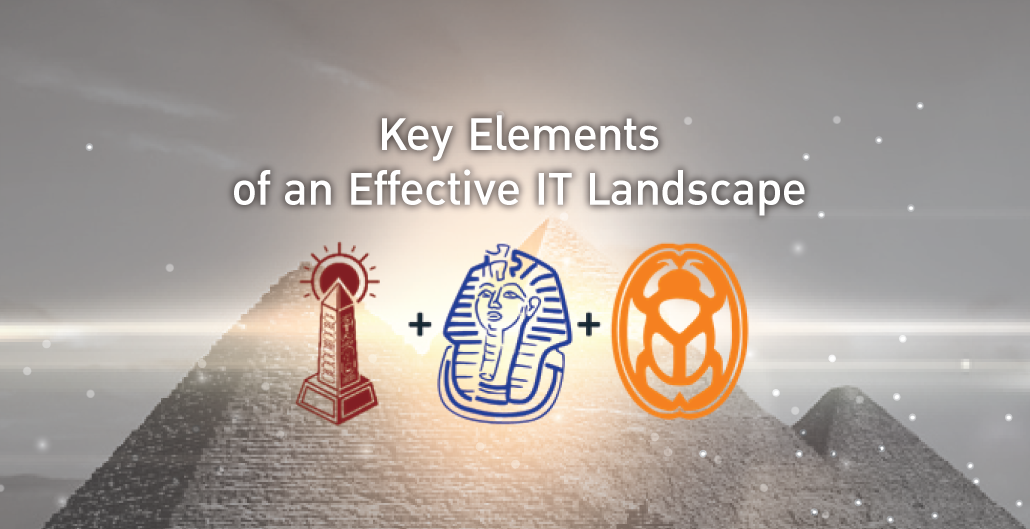Key Elements of an Effective IT Landscape
By Alex Konnaris, Chief Information Officer (CIO), RMA Group
Seeing the wordsInternal IT Systems’ might start causing some eyes to glaze over, but it’s integral to every organization, large or small, and to every employee working within those organizations.
I’m not saying this just because I work as a Chief Information Officer (CIO), but you can actually build solutions that your employees love to use, and that’s an amazing feeling! With that being said, on top of usability, there are a lot more factors to creating that perfect IT landscape that pushes your organization forward. IT solutions should be simple to use, accessible, innovative, flexible and cost effective at the same time. Phew, that’s a lot of boxes to tick!
Before diving into how we arrived at our IT landscape, let’s have a look at where things usually go wrong.
IT Systems: The Problems
- Not Understanding the Business’ Vision: IT systems need to align with the organization’s goals while keeping business growth and digital transformation in mind.
- Not Understanding Employee Needs: You won’t be able to help your employees if you don’t know what they need. They are your customers!
- Neglected Systems: Technology evolves rapidly, and businesses don’t have time for systems that lag behind. If your technology can’t keep up with the times, what good is it?
This all leads to ¦
- Low Impact: When employees can’t perform tasks effectively, customer delivery and other results are going to fall behind.
- High Costs: What is the return on investment (ROI)? You may be unknowingly spending too much on maintaining old, ineffective systems.
- Declining Customer Experience: While your customers may have no idea about what internal system you’re using, when systems start getting turbulent, they’ll soon catch on.
So, after our IT Management team got together and took stock of where the pitfalls where, we got to the core of the issue and started building a great IT management landscape.
Understand Your Users’ Needs
I can’t overstate the importance of this. Empathize with your employees, understand their top processes and pain points, otherwise you’ll end up wasting money on solutions that aren’t effective. For example, since RMA Group operates diverse businesses, we know that those working in Food & Beverage (F&B) will have different solution needs to those in logistics or automotive dealerships. Getting user feedback is extremely valuable.
Start Small, Think Big
Since almost every organization’s business objective is growth, the technology employed needs to be scalable to accommodate this. Start small, but think big – it’s better to overestimate the level of growth rather than ending up with systems that can’t keep up with the expansion of your business.
Make Sure It’s Effective
This one is a given!
Following on from these points, our team came up with an IT Management model that we could scale across all our businesses, from pizzas and ice cream to automotive modification. We also designed this particular model with the intention of keeping the number of ERP systems to a minimum.
How We Got To ˜The GIZA Model’
To reach our new ERP landscape model, titled ˜RMA GIZA’, we looked across all functional areas, mapped the key processes and qualified our existing systems for Consistency, Customer Happiness and Compliance.
Under the ˜RMA GIZA’ model, we have three supporting pillars: Obelisk (this covers IT Operations), Scarab (this ERP system covers our F&B operations), and Sphinx (this ERP system covers all other areas of our operations).
What’s exciting about this model is that it’s easy to break down. For example, our team knows that the Scarab pillar will be covering F&B operations, such as Activity Reporting,
Aged Inventory Batch Control, Online Ordering, Call Center, Loyalty Programs and other CRM. With this system architecture in mind, we can manage the customers and suppliers more efficiently, while closely tracking our costs.
Staff working in the F&B operations will be trained in tools specific to their role. Our business analysts, who act as the bridge between the system and the end users, can ensure they’re delivering the right training to the right people, and that’s all because the GIZA model is so easy to follow.
Having an IT landscape that encompasses a vision, mission, values and guiding principles, enables us to scale each pillar to match the growth of our business needs and stay focused on keeping our customers happy.
When an IT landscape is well thought out and user focused, positive outcomes shine through. To do this, IT managers should keep in mind the key elements of building effective, practical and robust IT systems such as mentioned above. Combine that with an organization that makes sure their IT managers play an active role in the business strategy, and you will see both measurable results and happy customers!



